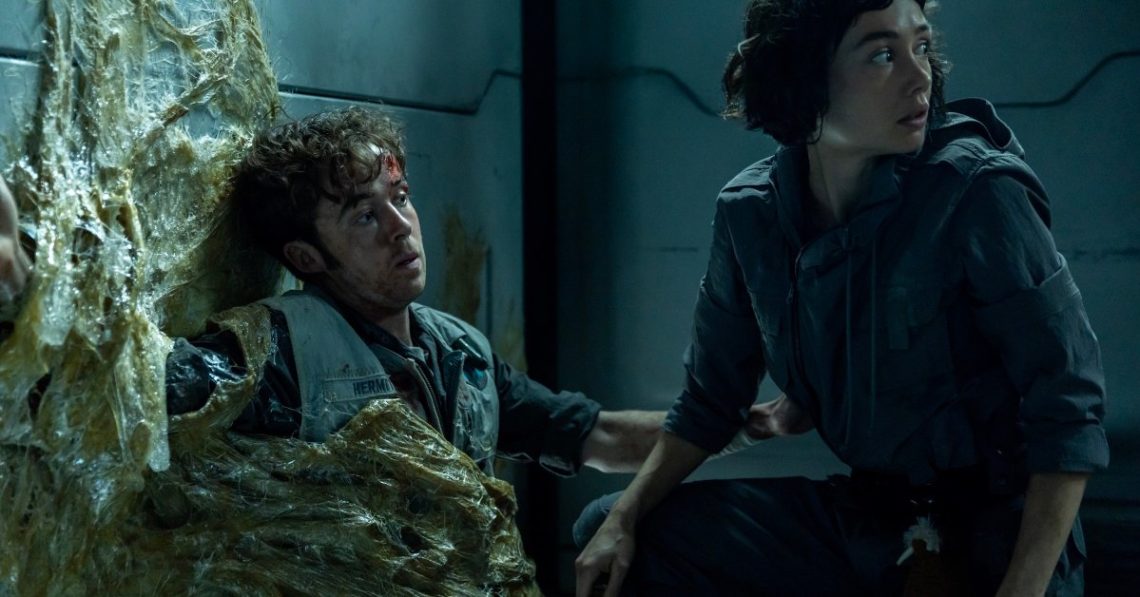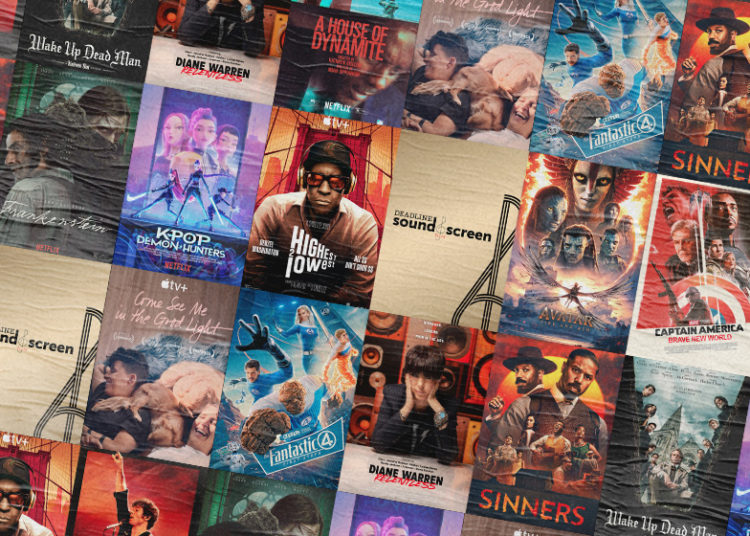Viewers of the new series Alien: Earth were probably expecting to see gnarly chest-bursting aliens and creepy robots. They were not expecting to see Sid, a lisping ground sloth from the second-rate CGI kids film series Ice Age. And yet, there he is, prominently featured in Alien: Earth‘s opening episodes. The absurd contrast between series creator Noah Hawley’s high-minded sci-fi horror and this silly cartoon animal went viral, though for as fun as it is to wonder what the hidden metaphorical meaning of Ice Age might be, the real contrast is between it and another children’s movie that’s woven into the narrative. Peter Pan is a big part of Alien: Earth, and the differing context of the two pieces of kids entertainment is a sly bit of commentary on childhood, arrested development, and storytelling tropes.
No facehugger latches on to Sid’s schnoz; he’s not actually a character in Alien: Earth. Instead, Sid appears via a scene from Ice Age: Continental Drift, the fourth film in the Ice Age franchise. Two of the main characters in Alien: Earth fondly remember watching the 2012 movie when they were kids despite the series taking place well over a century later. Wendy (Sydney Chandler) watched the movie with her older brother Joe Hermit (Alex Lawther) back when they were kids—back when she was still named Marcy, before her consciousness was transferred from her terminally ill 11-year-old body into a synthetic frame and given a new name. When Alien: Earth starts, Wendy and her brother are separated, and Joe thinks his sister is dead. They only have fond memories to reflect on—like watching Ice Age: Continental Drift and making Sid’s quote of “taste my fury” into an inside joke.
Of all the possible movies that the siblings could’ve bonded over, Ice Age: Continental Drift is a bizarre choice. Even if you suspend your disbelief that the pair are watching a 100-year-old animated movie rather than any bit of future kids entertainment that would be contemporary for them in the 22nd century, why Ice Age? Why the fourth movie in the franchise instead of the first one? Continental Drift made nearly $900 million when it came out, though the reviews were middling at best, and none of the Ice Age movies are exactly hailed as classic cinema.
Read more: FX’s Alien: Earth Is the Best Thing to Happen to the Franchise Since Aliens
There are some explanations for Ice Age‘s inclusion, though. Disney, which owns FX and Hulu, the networks on which Alien: Earth airs, owns Ice Age, having acquired the franchise when it bought Fox. Disney acquired the Alien IP in the same merger. (Continental Drift came out the same year as Prometheus, Ridley Scott’s first Alien prequel that is not part of this TV show’s canon, so maybe featuring it in the show is a meta nod to the other 2012 movie not existing in this world.) But even beyond the practicalities of ownership, there are thematic explanations, too. The Ice Age franchise is fundamentally about characters grappling with the end of an era that will eventually render their species extinct—and there are dangerous predators out there. If you squint, there’s a similarity to how Alien: Earth is about mankind trying to render itself obsolete with cyborgs and synthetic bodies, not to mention the Xenomorphs hunting them. Continental Drift features some pirate-like characters, including Captain Glutt, the gigantopithecus featured in the scene Joe and Wendy are watching. It shares pirates in common with Peter Pan, the other kids flick featured in Alien: Earth. However, Ice Age as a contrast to Peter Pan is what’s really key to it showing up in this series.
While a little girl and a little boy love Ice Age in Alien: Earth, a different sort of boy is obsessed with Peter Pan. Boy Kavalier (Samuel Blenkin), the world’s youngest trillionaire and CEO of the Prodigy corporation responsible for giving Wendy her synthetic body, may be immature, but he’s very much an adult. Given that he is attempting to invent a technology that makes people immortal, and that the first step toward accomplishing that is putting children’s consciousness into unaging bodies, it tracks that he’d find something relatable in Peter Pan. He shows a clip of the 1953 Disney movie to Wendy and the other kids during the transfer process; he’s often seen reading the book to them; and he calls his hybrid creations his Lost Boys. Their new names—Wendy, Slightly, Curly, Nibs, Tootles, and Smee—are all from Peter Pan.
Read more: How FX’s Alien: Earth Fits Into the Alien Universe
Thematically, Boy Kavalier’s interest in Peter Pan is a little on-the-nose. It is also very uncomfortable because he is a grown man fixated on a work of children’s fiction. He is going to great lengths to showcase the depths of his Peter Pan fandom, and you can feel that effort. It’s almost a sort of twisted virtue signalling, except instead of signalling some enlightened view of life, what he’s really conveying is: “I am a big creep.” (The Disney Peter Pan movie, it should be noted, is staggeringly racist, making Kavalier’s adoration even more offputting.) It’s not like real-life tech CEOs are known for their maturity, and Peter Pan is exactly what one who calls himself a boy genius would make into their whole thing. The content of the story is secondary to the metaphor and what Kavalier thinks the references are projecting about himself.
Compare that to Wendy and Joe watching and enjoying an Ice Age sequel when they were actually kids—and Wendy, despite her grown-up synthetic body, is still a kid. Any parent who ever had high-minded aspirations that their children will be cultured and only watch enriching works during screen time understands that, in reality, kids are drawn to what they like. They watch a lot of what discerning adult audiences might consider trash—like, for instance, Ice Age: Continental Drift, with its 37% score on Rotten Tomatoes. For whatever reason, kids’ fare like this is often the thing that sticks with young viewers rather than so-called classics like Peter Pan. Wendy doesn’t love Ice Age because the movie has some greater metaphor that she can use to enhance her persona: She loves it because it was something she watched with her brother.
Alien: Earth acknowledges that kids watch kids entertainment, not metaphors. By having Wendy love Ice Age and Kavalier put so much of his identity into Peter Pan, Alien: Earth is reminding the audience who the real children are; no matter how adult Wendy looks or how childlish the boy wonder acts.
The post What’s the Deal With Ice Age and Peter Pan in Alien: Earth? appeared first on TIME.




